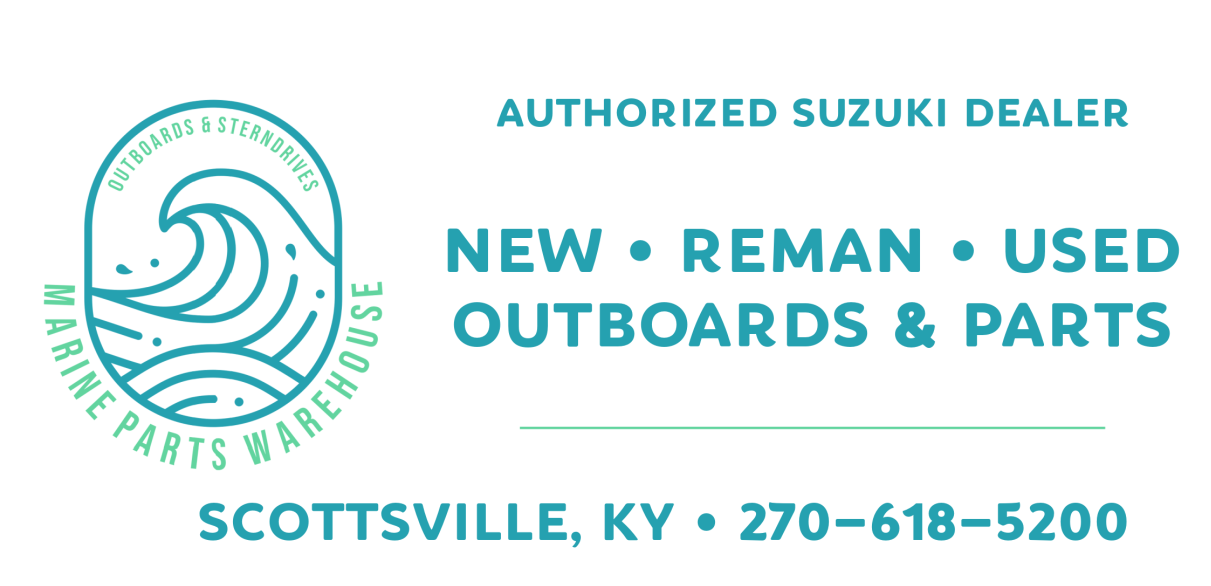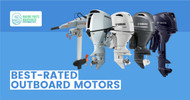Best Rated Outboard Motor of the Year 2025
Whether you are chasing early morning topwater bites on a glassy lake or hauling the family across saltwater swells for a weekend escape, the outboard motor strapped to your transom isn’t just a tool—it’s the heart of your journey. The best-rated outboard motors today are an elegant blend of fuel efficiency, torque curves, low-maintenance engineering, and seamless integration with modern electronics.
Gone are the days when “more HP” was the only metric that mattered. Today’s boaters are looking for throttle-by-wire precision, whisper-quiet idle, better corrosion resistance, and smart diagnostics at their fingertips. Brands like Yamaha, Mercury, Honda, Suzuki, and Evinrude have all pushed the bar, each with their own take on innovation, from variable camshaft timing to hybrid-electric integration.
In this post, we’ll break down the top-rated outboard motors based on performance under load, durability in real-world conditions, and how they stack up in the eyes of those who rely on them every single day. Have a look!
What Makes a "Best-Rated" Outboard Motor?
The best-rated outboard motors are known for their technical performance, maintenance ease, real-world reliability, and consumer satisfaction.
Here's what really sets the best models apart:
- Fuel efficiency
- Corrosion resistance
- Advanced technologies
- Quiet, smooth performance
- OEM and aftermarket support
- Comfort while riding
6 Best-Rated Outboard Motors from Top Brands
The motors aren't merely highly rated; they are field-tested and attested by hundreds of users from all over the globe. Here are the 6 best outboard motors.
|
Feature |
Yamaha F115 |
Mercury 150 Pro XS |
Honda BF150 |
Suzuki DF150SS |
Tohatsu MFS20 EFI |
Torqeedo Travel 1103 CS |
|
Engine Type |
4-cyl, DOHC, 16V, EFI |
4-cyl, DOHC, 16V, EFI |
4-cyl, DOHC, 16V, VTEC, EFI |
4-cyl, DOHC, 16V, EFI |
2-cyl, 4-stroke, EFI |
Direct-drive electric motor |
|
Horsepower |
115 hp |
150 hp |
150 hp |
150 hp |
20 hp |
~3 hp equivalent (1.1 kW) |
|
Weight (approx.) |
377 lb (171 kg) |
455 lb (206 kg) |
478 lb (217 kg) |
511 lb (232 kg) |
95 lb (43 kg) |
38.1 lb (17.3 kg) incl. battery |
|
Fuel Type |
Gasoline (87 Octane) |
Gasoline (87 Octane) |
Gasoline (86+ Octane) |
Gasoline (87 Octane) |
Gasoline (87 Octane) |
Electric (Li-ion 915 Wh integrated) |
|
Cooling System |
Water-cooled |
Water-cooled |
Water-cooled |
Water-cooled |
Water-cooled |
Water-cooled (indirect) |
|
Ignition System |
Microcomputer CDI |
SmartCraft PCM |
Programmed Fuel Injection |
Multi-point Sequential EFI |
Digital CDI |
Fully electronic |
|
Starting System |
Electric |
Electric |
Electric |
Electric |
Manual or electric start |
Push-button electric start |
|
Steering |
Remote / Tiller |
Remote |
Remote / Tiller (opt.) |
Remote |
Tiller |
Tiller |
|
Shaft Lengths Available |
20" / 25" |
20" / 25" |
20" / 25" |
20" / 25" |
15" / 20" |
15" / 20" |
|
Trim & Tilt |
Power Trim & Tilt |
Power Trim & Tilt |
Power Trim & Tilt |
Power Trim & Tilt |
Manual or optional Power Tilt |
Manual Trim (fixed positions) |
|
Alternator Output |
35A |
60A |
55A |
44A |
12A (electric start models) |
USB output; no alternator |
|
Emissions Compliance |
EPA / CARB 3-star |
EPA / CARB |
EPA / CARB |
EPA / CARB |
EPA / CARB 3-star |
Zero emissions (electric) |
|
Best For |
Versatile boating, fuel economy |
High-performance fishing, speed |
Quiet operation, clean emissions |
Saltwater toughness, fuel economy |
Portable use, small boats, fuel efficiency |
Eco boating, electric-only lakes |
|
Top Speed (est.) |
~45–50 mph (with compatible hull) |
~55–60+ mph (on bass boats) |
~45–50 mph |
~55 mph |
~22–25 mph (light skiff) |
~5.5 knots (~6.3 mph) |
|
Range (avg @ cruise) |
~200–250 miles (with 25–30 gal tank) |
~150–200 miles |
~180–220 miles |
~190–230 miles |
~100+ miles (6–8L/hr avg) |
~20 hours at slow speed / ~5 miles full throttle |
|
Warranty |
3 years |
3 years |
5 years |
5 years |
5 years |
2–5 years (model/year dependent) |
1. Yamaha F115 – Best All-Around 4-Stroke Motor
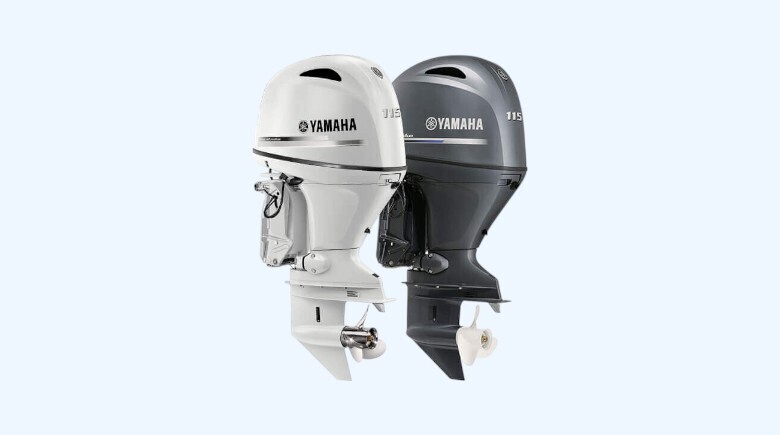
Yamaha F115 outboard motor has been a favorite among boaters for years, looking for a consistent, efficient, and high-power motor for various boats. The motor is a good contender in the 115 hp category with an excellent power-to-weight ratio.
The four-stroke engine has tremendous acceleration, offering smooth and even power across all RPM ranges. Another favorite feature of the Yamaha F115 is the magnificent fuel efficiency; Yamaha's sophisticated fuel injection system minimizes combustion.
Overall, the F115 outboard engine is made to be long-lasting with a good reputation for reliability and minor problems even after years of service. Another aspect of this engine that I find quite appealing is its construction, which is well-suited for DIY repair and simple engine maintenance.
Explore Yamaha vs Mercury, Which one stands out.
2. Mercury 150 Pro XS – Top for Performance Boating and Bass Fishing
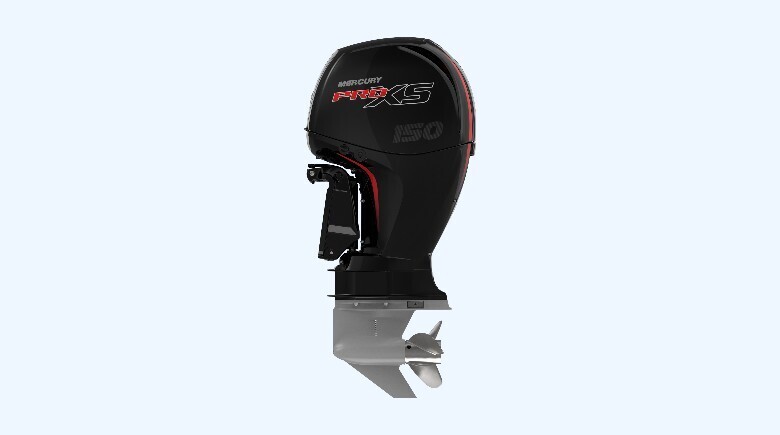
The Mercury 150 Pro XS is intended for anglers who want aggressive acceleration, outstanding top-end speed, and responsive handling. The outboard is widely used by bass anglers as well as competitive fishermen who need to optimize their boat's potential.
150 Pro XS really excels with its power. It possesses a heavy-duty hole shot and a scorching top end, providing an exhilarating boating experience. The one thing that I truly appreciate about this Mercury outboard is the nicely balanced high output, along with optimal fuel usage. This engine features a 2.08:1 gear ratio along with a tuned gearcase, providing stiff and controlled performance, even with the high mounting or jackplate applications.
Mercury 150 Pro XS is a lightweight, powerful, and fuel-efficient alternative that delivers true speed and marine-based design to the mid-hp outboard sector.
3. Honda BF150 – Ideal for Quiet Operation & Eco-Boating
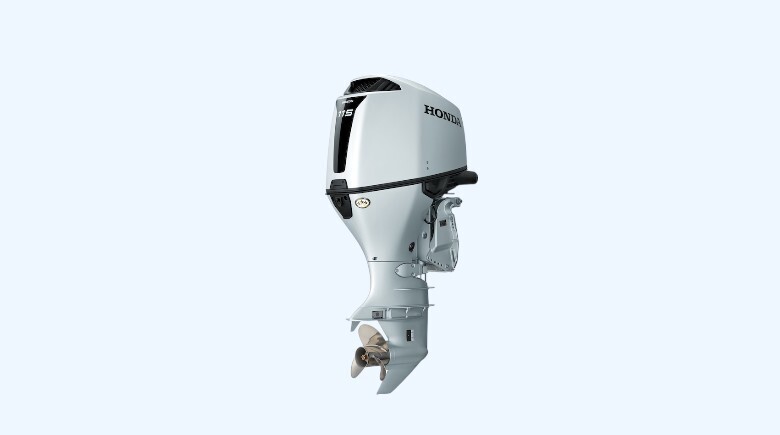
The Honda BF 150 is a reflection of Honda's fundamentals: engineering excellence, environmental responsibility, and reliability. The outboard motor provides smooth, refined power without exception. It's not labeled as a high-performance engine, but the BF150 with VTEC technology has enough and responsive power for the extensive range of boats, ranging from family cruisers to fishing boats.
This outboard operates at approximately 90dB, significantly quieter than comparable engines, making conversation at the helm possible without shouting. Owners reliably report years of service with good care, crediting Honda's dedication to quality and durability in extreme conditions.
4. Suzuki DF150SS – Most Fuel Efficient & Saltwater Resistant
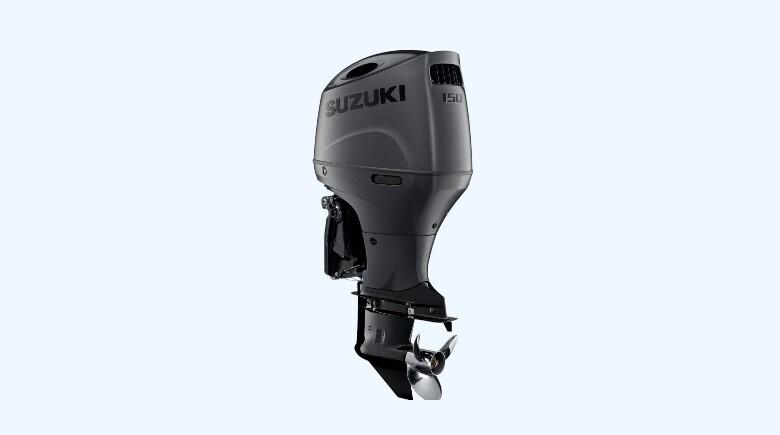
The Suzuki DF150SS engine is perfect for serious anglers, commercial fishermen, or any boat owner who spends a lot of time on the open water and requires an engine that's economical and durable. Its 2.8-liter DOHC in-line four-cylinder engine yields plenty of torque throughout the RPM range, delivering quick acceleration from a dead stop ("hole shot") and robust mid-range cruising ability.
Suzuki's innovative Lean Burn Control System predicts fuel needs and delivers a leaner, more precise air-fuel mixture across the operating range. The result is significantly reduced fuel consumption compared to many competitors, translating into substantial savings over time and extending your range on a single tank.
The DF150SS is the perfect option for boaters, providing a combination of great performance, class-leading fuel efficiency, and an emphasis on efficiency. If you want an engine that's rugged, economical, and prepared for whatever the sea can give, the DF150SS is an excellent option.
5. Tohatsu MFS20 EFI – Best Portable EFI Outboard for Small Boats
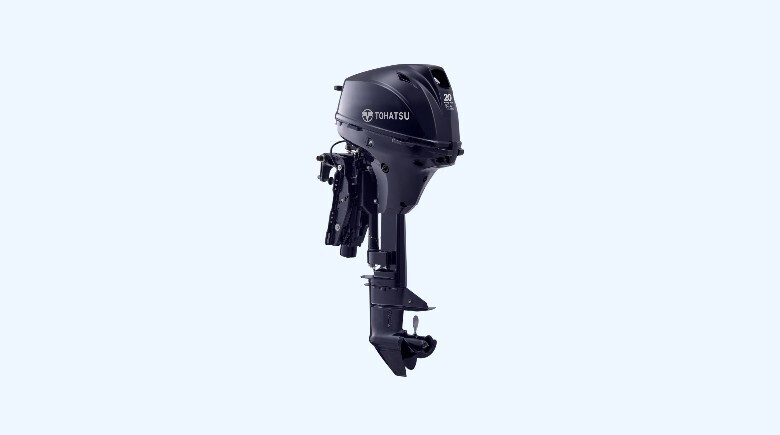
The Tohatsu MFS20 EFI is a lightweight, portable outboard motor that tips the scales at just 43 kg. It is one of the lightest outboards in its range – simple to mount, lift, and tilt. For easy boating on lakes, rivers, or calm coastal areas with your little boat, the MFS20 EFI is a smart and popular choice.
This 333cc, 2-cylinder motor is paired with the accuracy EFI, which gives instant throttle response and smooth acceleration. Its clean design with fewer potential points of failure also makes it more durable. The outboard motor with Electronic Fuel Injection System is a pioneer in the portable market, offering reliable performance, easy starting, and substantial fuel savings.
6. Torqeedo Travel 1103 CS – Quietest Electric Outboard for Silent Lakes
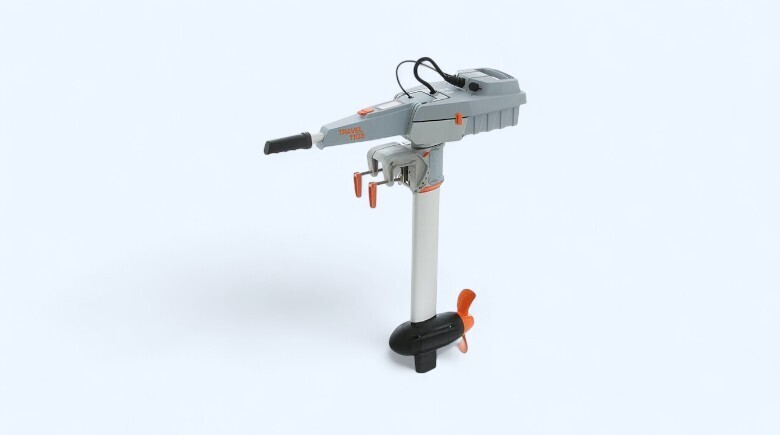
The Torqeedo Travel 1103CS is the pinnacle of marine propulsion for anyone who demands an unprecedented experience, eco-friendliness, and hassle-free boating on the water. The compact outboard is perfect for dinghies, tenders, small sailboats, and jon boats.
This motor comes with a 915Wh lithium battery integrated directly into the motor, with an input of up to 1100W, providing about 70lbs of thrust. The saltwater-resistant and waterproof boat is constructed using a durable aluminum shaft and mounting, ideal for longevity. Moreover, it does not need any oil changes, filters, spark plugs, or winterization pain. The boat is the ideal option for sensitive environmental places, offering the best eco-friendly means of enjoying the trips.
How to Select the Proper Outboard Motor for Your Boat
Picking the ideal outboard motor is more than a matter of selecting a "best-rated" product; it involves careful consideration of your own boating requirements and boat specifics. Here are the vital considerations:
Match Horsepower to Hull Design
Match your hull and the outboard's horsepower is most important in order to achieve maximum performance, safety, and efficiency. Overpowering is unsafe and wasteful, while underpowering results in poor performance. Check your boat's manufacturer's charts for the highest recommended horsepower. A general guideline:
- Planning Hulls: Need enough horsepower to lift quickly onto plane and remain at speed efficiently.
- Displacement Hulls: Usually do well with less horsepower, since they are built to cut through water, rather than travel over water.
- Pontoon Boats: Find higher torque helpful for propelling their wide, heavy hulls efficiently.
Select the Proper Shaft Length
Your outboard shaft length should be equal to your boat's transom height to ensure proper propeller submersion and optimal performance. Improper shaft length can cause cavitation (the propeller losing traction), poor running, and even damage.
- Short Shaft: Generally 15 inches, for small jon boats and dinghies.
- Long Shaft: 20 inches, typical of most standard transoms.
- Extra Long Shaft: Approximately 25 inches, for higher transoms, usually center consoles.
- Ultra Long Shaft: 30 inches or greater, for very large offshore boats.
Choose Engine Type by Use
The selection of a 4-stroke, 2-stroke (particularly newer DFI), or electric outboard can influence your boating experience.
- 4-Stroke: Dominant today, with better fuel mileage, quieter running, smoother idle, and cleaner emissions. Best suited for general recreational boating, cruising, and long-term use.
- 2-Stroke (New DFI): Lighter weight for their power, usually more sensitive to acceleration because of greater power-to-weight ratio. Remain popular for some performance uses and smaller portables.
- Electric: Quiet, no emissions, low maintenance. Ideal for small boats, tenders, and fishing in quiet areas. Range and battery life are key considerations.
Features
Newer outboards are shipped with features that can drastically improve your experience on the water. See what are most valuable to you in your application:
- Digital Throttle & Shift (DTS): Offers smooth, intuitive, and effortless operation, usually with cruise control and one-touch docking features.
- Power Trim & Tilt: Enables you to rake the motor for best performance, fuel economy, and shallow-water running.
- Integrated Steering: Eliminates rigging clutter and provides extremely fine control, typically found on bigger, more sophisticated models.
- Engine Monitoring Systems (NMEA 2000 compatibility): Enables the engine to talk to your boat's multi-function displays and sends them important information such as fuel consumption, RPM, and engine temperature.
- Corrosion Resistance: Critical for saltwater use, seek out higher-end coatings, stainless steel hardware, and sacrificial anodes.
Freshwater vs. Saltwater Usage
This is an important difference. Saltwater is corrosive, requiring outboards with high levels of anti-corrosion features. Although all outboards can be operated in saltwater if properly flushed, some are designed specifically for the corrosive marine environment. Consider these features:
- Look for stainless steel parts
- Multi-stage paint systems and barrier coatings.
- Larger sacrificial anodes for cathodic protection.
- Simpler access to freshwater flush ports.
Even if your boating is done mostly in freshwater, knowing these features makes for a more long-lasting investment.
Brand Support and Parts Availability
A "best-rated" motor is only as good as the support it has. Before sinking a large investment, investigate the manufacturer's warranty, their local dealer network, and the availability of authentic parts. A good dealer relationship translates into access to certified mechanics, on-time service, and easily available spares.
At OBParts.com, we offer an extensive inventory of OEM and aftermarket outboard motor parts for all top brands so that you can continue to run your top-rated outboard motor in top shape for years to come. Browse our inventory of Yamaha Parts, Mercury Parts, Honda Parts, Suzuki Parts, and Tohatsu Parts today.
Maximizing Your Investment: Maintenance Tips for Outboard Motors
- Regular Servicing: Adhere to manufacturer service intervals (every 100 hours or yearly). Professional checks, filter replacements, oil changes, and software revisions are essential.
- Fluid Checks & Changes: Fluids protect critical internal equipment from heat, friction, and corrosion. Monitor closely the engine oil, gear lube, power trim & tilt fluid to guarantee correct operation.
- Caring for the propeller: It is a vital part that comes into contact with the water. It converts power directly into thrust. Practice dictates regular checks for damage and cleaning of marine growth, fishing line, and debris after each trip.
- Corrosion Prevention: Outboards are vulnerable to corrosion in freshwater and saltwater. Saltwater is more effective at hastening the process, though. It's essential to flush the engine with fresh water, grease moving parts, and frequently check sacrificial anodes for proper operation.
- Winterizing & Storage: If water bodies freeze in the areas you reside in, winterizing the outboard is necessary for long-term storage. Winterizing the outboard motor requires a number of processes that include fuel stabilizing, fogging, draining the lower unit, cooling system drain, inspection, and cleaning.
- Troubleshooting Minor Problems: Professional service is needed for major repairs; learning to identify and correct minor problems will save you time, aggravation, and avoid more costly, extensive problems from arising. Learn how to troubleshoot and fix 7 common outboard problems.
FAQs
What is the average life expectancy of an outboard motor?
A well-maintained new 4-stroke outboard motor will last between 1500 and 4000 hours, and longer in some well-maintained units. Several factors contribute to the length of time the motor will last:
- Regular Maintenance
- Operating Conditions
- What is the engine used for?
Is a larger outboard motor always better?
No, a larger outboard motor isn't always better. More horsepower might sound desirable, but the maximum horsepower rating of the boat dictates the ideal motor size.
- An overpowered motor can cause unsafe handling, damage to the boat's structure, and poor fuel efficiency.
- An underpowered outboard motor leads to compromised performance, difficulty in getting on plane, and even running the engine too hard.
Do I purchase a new or used 'best-rated' outboard?
Whether you should purchase a new or used best-rated outboard is based on your finances, risk tolerance, and what features you want.
New Outboard Motors:
- Advantages: Newest technology, full factory warranty, maximum reliability, no pre-existing wear or hidden history, frequently more efficient fuel economy and reduced emissions
- Disadvantages: High initial cost, rapid depreciation
Old Outboard Motors:
- Advantages: Smaller purchase cost, depreciation is already done, and can be excellent value if properly maintained
- Disadvantages: No or limited warranty, unknown maintenance and use history, risk of undetected problems, may not have contemporary features.
Conclusion
The highest-rated outboard motors by leading brands provide unparalleled performance, reliability, and durability. With a superior design and contemporary features, the motors will make the journey much more interactive, exciting, and adventurous.
With a solid grasp of what constitutes an outstanding outboard engine, and considering your boat's needs and your boating style, you can choose with confidence the highest-rated outboard motor that will last for years to come and give you unforgettable, wonderful times on the water.
No matter whether you choose the legendary reliability of a Yamaha, the high-octane thrill of a Mercury, the quiet competence of a Honda, the sporty personality of a Suzuki, the solid value of a Tohatsu, or the advanced quietness of a Torqeedo, keep in mind the correct choice will leave boating experiences unforgettable.
Ready to purchase the ideal outboard motor? Head over to the extensive collection of outboard engines and select a model that suits your needs, budget, and specifications.
Posted by Brian Whiteside
